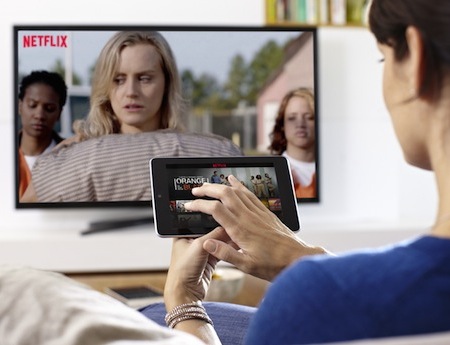How the Video Industry Went OTT Gradually… Then Suddenly
TV[R]ev analyst Alan Wolk says the technology to enable serious change in the TV business has existed for many years. And thanks to the pandemic, serious change might finally be upon us.

For the better part of the last decade we have been hearing about how massive change was imminent in the television industry. This included everything from claims that a “massive wave of cord cutting” would soon kill off the pay TV industry, along with more mundane predictions like the rise of Netflix-like TV Everywhere apps from MVPDs and the expansion of addressable TV advertising.

And while the TV industry has been changing, those shifts have largely been incremental, which is notable in that the actual technology to enable serious changes has existed for many years now.
The culprit? Inertia. Everyone was still making money hand over fist, and if there's anything that makes people resistant to change, it’s a flush bottom line.
That all changed back in March when the pandemic hit, followed closely by nationwide social justice protests.
Not that these events particularly devastated most industry players’ bottom lines—ad budgets got cut, but not to the level of “devastating” (at least not yet)—but something about the pandemic and the protests and the way they changed the way we see the world seems to have also shocked the broader media industry into realizing that maybe it was time to stop putting off all those changes.
Time is short, stability is fleeting, and all that.
This is not unusual. Periods of great upheaval traditionally result in periods of innovation, as clinging to the old ways no longer makes sense in the new world.
The smarter way to stay on top of the streaming and OTT industry. Sign up below.
For the television industry, this shift will be helped along by the fact that many of the key pieces were put in place prior to and in the early days of the pandemic.
The launch of four new Flixes (giant multibillion dollar services) from Apple, Disney, Comcast and Warner (with a fifth, from ViacomCBS on the way) has more than doubled the number of streaming options available to consumers. This, in combination with over 40 million Americans unemployed, should also result in a larger-than-expected increase in the amount of cord-cutting as many viewers realize that the bulk of their paid TV viewing has shifted to the Flixes and the money they’re spending on a cable TV subscription would be be best spent elsewhere. Take food, for instance.
There are also the FASTs, the free ad-supported streaming TV services, whose rapid growth can be attributed to their large content libraries, much lower ad loads and, above all, the fact that they’re free for anyone with an internet connection.
Combine the Flixes and the FASTs and suddenly you have a TV ecosystem that is completely digital, still includes all of the major players and series from the good old days, and seems to be doing a good job of meeting consumer needs.
It’s also doing a good job of meeting advertiser needs, which is critical, given their critical role in making the TV industry profitable.
Advertisers like smaller ad loads (it allows their spots to have more impact) and the increased ability to run addressable TV advertising, both on OTT and on linear is also gaining traction due to the pandemic. As various parts of the country are opening up and shutting down at different times, advertisers are realizing the need for flexibility and the ability to target their messages to specific households in specific regions.
For advertisers, this scenario, often referred to as “The Hammer and the Dance” means the ability to be able to target local audiences is more relevant than ever before, which is why both local broadcasters and MVPDs are making increased use of OTT to help reach local viewers who are not easily found on linear. By combining both linear and OTT, advertisers are able to reach those local audiences, while maintaining the ability to adapt their messages at the last minute, depending on the situation on the ground.
What’s Next?
The biggest question is whether the industry continues to double down on innovation or whether it reverts to the dysfunction of the past. We are certainly seeing the latter play out with the HBO vs Roku and Amazon beef, which feels like an updated version of the carriage fee battles that certain satellite providers were well known for.
This is unfortunate because doubling down on innovation would actually be a boon for everyone in the industry, consumers, programmers, distributors and advertisers.
Take something like the oft-proposed personalized linear channels on the FASTs and even the Flixes, something akin to Spotify’s Daily Mixes, where an algorithm looks at your prior viewing history and creates a linear stream especially for you. That would be a huge PR win for distributors and programmers as the feature would get them a lot of positive buzz, and it would be a big win for advertisers too, as they’d know exactly who they were targeting and could potentially even personalize the ads,
The technology for these sorts of algorithms certainly exists and it wouldn’t be too hard to implement. It would even help the FASTs get viewers to sign up for an account, at which point their targeting could become even more precise.
Another area where innovation is needed is in managing TV subscriptions. While Roku, Apple and Amazon have made great strides, their approach is not necessarily appreciated by larger platforms (hence the current beef-fest with AT&T) but there’s still a need for a service that helps viewers manage their existing subscriptions, find new services and find shows they want to watch without having to resort to Google.
While there are no guarantees that the current global crises will lead to increased innovation when we get to the other side, history seems to indicate that is indeed what will happen. As people and organizations are knocked out of the old, comfortable ways of doing things, newer, better and more efficient methods suddenly seem a lot less scary.
Alan Wolk is the co-founder and lead analyst for media consultancy TV[R]EV

